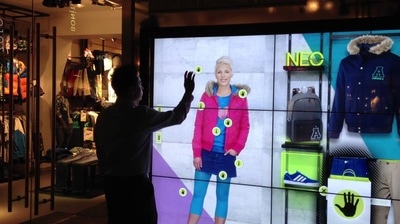EMERGING MARKETS / TRENDS
- meganwhittle
- Oct 19, 2016
- 3 min read
The fashion market is no longer just about fresh ideas and the latest designs but the entire shopping experience, from being fully submersed by a brand in store to having the same experience online in the comfort of your own home. The most important trend currently within the fashion industry is digitalisation and the use of digital platforms such as apps and social media by brands. The costumer no longer wishes to try on a product in store but finds real-life reviews more trustworthy with up to 35% of consumers relying on recommendations they find on social networks. Bloggers - such as myself - also play a key role within in the industry as they are more relatable and reliable to the real-life costumer than the brand itself - who obviously want their product to sell. Adidas' NEO label adapted this to enhance their costumers in-store experience by placing interactive mirrors in some of their concept stores. This allowed costumers to try on products, take a picture and post it onto their social networks for instant feedback off their friends - which of course they're more likely to listen to than the sales assistant who thinks 'blue really is your colour'. While websites were previously used to provide brand information the development of apps and online platforms for purchasing has led to online retail growing at three times the rate of the overall market. Companies not only have to use visual merchandising and branding within store but also portray that same look and environment on their online spaces, creating seamless links between the platforms. Burberry is one of many omni-channel brands that not only enhance online experience through branding but also enhance in-store through the use of technology. Each Burberry store is equipped with an iPad, if something is not available in store it can be swiftly ordered for the costumer without them even needing to step home and log onto their computer. This allows a more personal experience within store and contributes to up to 10% of the brands orders - which otherwise may have been lost. This increase of online accessibility has also put added pressure onto stores. Us consumers now have a virtual space containing all the stock, sale items, daily deals and discounts needed, with the kind of lazy added plus of having it delivered right to our doorstep, who even needs to go into store anymore? To keep in-store retail experience alive stores will soon have to adapt and offer the same convenient aspects as shopping online but captivate the costumer to keep them coming back. The use of online platforms has also created a huge mass of costumer data for retailers allowing advertising to become more direct and personal. Those Missguided shoes you looked at the other day are now appearing everywhere you look - there's no escape, your practically forced to buy them - from Instagram adverts to Facebook and its new 'Market Place' tab there will always be some form of retail advert on your screen. Online campaigns have now become so easy and successful there's not really any need for old-fashioned billboards. High street advertisement generates little awareness but costs a hell of a lot more than some Tweets and Instagram posts, while online promotion contributes less to brand expenditure it has the power to reach millions. Shopping is no longer determined by the weather, time or whether you really want to leave the house on your one day off this week - but about products being available with whoever, wherever and whenever you want.


Comments